MUST-READ OF THE WEEK: THE GRAVEYARD OF GWENNA LUNA
This article contains affiliate links. We may earn a small commission on items purchased through this article, but that does not affect our editorial judgement.
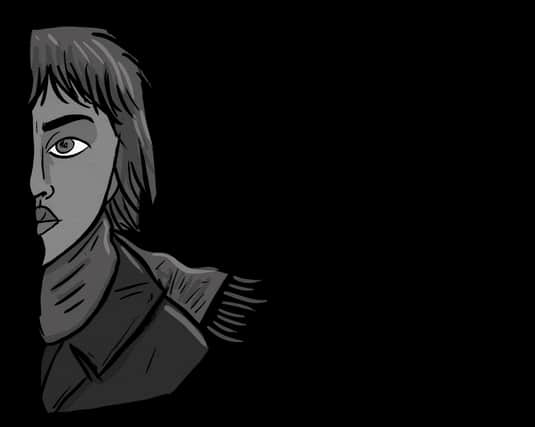

Anthology The Graveyard of Gwenna Luna by Guenther Primig combines the best of classic and contemporary horror with a terror-bound coming-of-age saga dripping with atmosphere.
By Gwyneth Rees
Think classic horror, and you’ll probably conjure up images of Freddy Kruger dragging his sharpened claws along a wall or a masked Michael Myers hunting down cheerleaders.
This, however, is spectacle over substance, shocks before scares. True classic horror—be it in print or on the screen—eschews the direct approach (which certainly has its place) for something far more sinister, where the all-pervading atmosphere of dread gets under your skin rather than trying to wear it.
It is this old-school approach that defines new horror anthology The Graveyard of Gwenna Luna: Six More Dreams from the Dark Book, the long-awaited second entry in the Gwenna Luna series.
Written again by acclaimed horror author and screenwriter Guenther Primig, it follows 2019’s The Dark Book of Gwenna Luna, which has since become a bestseller in the genre.
The first book first introduced us to the eponymous anti-heroine Gwenna, an outsider teenager who visited a jaded psychiatrist to try and unravel her nightmarish dreams.
We learned that Gwenna was, in fact, a witch and torn between choosing a path for good or evil.
The Graveyard of Gwenna Luna is set one year after the events of the first book and sees the memorable protagonist now out in the world, seeking to use her powers to save someone and, by doing so, save herself.
Unfortunately, her magic is weak, her spells half-remembered, and she continues to battle with inner demons—a murderous mother, the Red Witch, and tragic past—which are fast catching up with her.
That is the key premise of this overarching coming-of-age story, that Gwenna has no specific destiny—unlike less complicated magical figures such as Harry Potter—so the direction she ultimately commits to will be of her own making.
And while Gwenna states she wants to be good, you can’t help but feel that the terrible events she has to deal with may force her hand the other way.
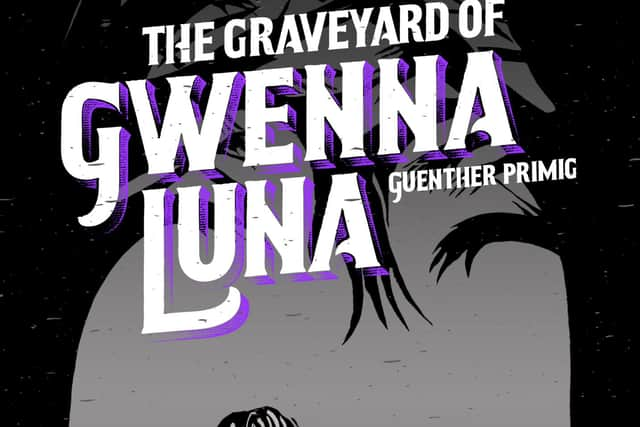

The ongoing tension of this compelling narrative arc is drip-fed through the six short stories which make up the anthology.
And the stories, it must be said, are sublime, representing the finest, most fiendish slices of contemporary horror/weird fiction I’ve encountered in a long time.
Conjured up from Gwenna’s darkest dreams , they all drip with brooding atmosphere and are filled with resonant classic horror imagery—graves, corpses, ravens, and dark, shadowy figures lurking—which effortlessly transport the reader into the arena of the eldritch as the spine-tingling suspense begins to ramp up.
The dream stories comprise macabre tales of a madman desecrating a shunned grave (‘The Thing In The Box’); a monster’s voice calling from a moor (‘She’); a ghost wailing in an old house (‘The Troubled Room’); a woman speaking to the dead (‘Those Who Speak To The Dead’); a cursed hunt for a sacred animal (Wood King); and a gut-wrenching story involving three particularly wicked witches (‘Three Dreaded Sisters’) that will prove every parent’s nightmare.
All this is pulled off despite the modern settings (we variously visit New York, a swamp where fracking is taking place, and go on a train journey, among other locations), which just goes to show that the present day can be just as gothic as the past, when handled correctly.
The fact the author can achieve this with the more familiar milieus is testament to his writing, with brilliantly subtle character work coupling with excellent pace and dramatic development.
This shouldn’t be a surprise, however, given that Primig’s pedigree speaks for itself.
The Austrian-born writer grew up in a culture which still retains a strong sense of mysticism and belief in the supernatural. As such, he was regaled with folk stories of ghosts, devils and dragons as a child.
He also devoured the works of such celebrated horror icons as M. R. James, Edgar Allan Poe, and H. P. Lovecraft.
Aside from the Gwenna Luna series, he has written numerous horror short stories, stage plays and screenplays. His screenplay Two Sides of a Dead Man was a semi-finalist in the Academy of Motion Picture Arts and Sciences Nicholl Fellowship for Screenwriting, while his play about a fictitious horror star of Hollywood's golden age, The Man of Shadows, had three successful runs at the English Theatre Berlin.
His ghost story, ‘Smugglers’, was included in the Shirley Jackson Award-nominated anthology Shades Of Darkness, published by Ash Tree Press in 2008, and two of his screenplays, Wrath, a horror film about vengeful ghosts, and Figment, a supernatural thriller are currently being developed by film companies in the UK and France.
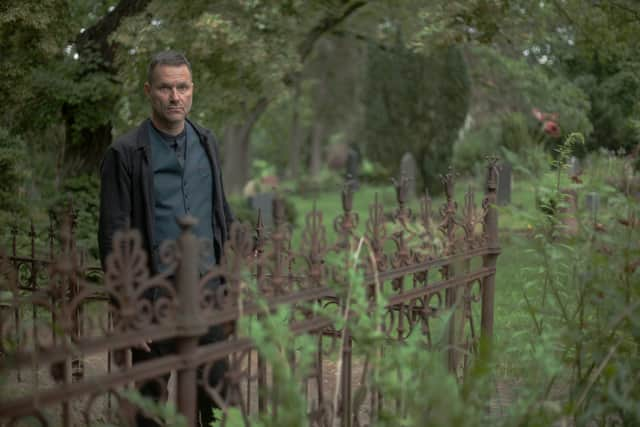

One of the key things I like about Primig’s stories is how the spooky elements are embedded in universal themes which will connect with the reader, such as loneliness and the need to confront and exorcise the past.
I also love how Gwenna’s story evolves as the book progresses, especially after she encounters Penrod, an unusual boy who promises to help teach her about magic and lay her dreams to rest but who may have an agenda of his own.
In a key moment, Penrod challenges Gwenna to discover who she really is. Which way will this mixed-up witch go in her life? Will she rise up and challenge the path already set for her, or is she going to let other people’s fears destroy her?
He took off his coat and spread it on the ground. He sat down and began to draw symbols in the snow. “A white witch will be killed,” he said. “A black witch-no. We don't like those.” He glanced at her, slyly, reading her. “What do you think,” Penrod said, “about a sort of gray witch?” She knew some of the symbols he was drawing. They were deadly things. As more and more of them appeared in the snow, the convalescent sun withdrew into the lead sky and the world darkened. Here there be dragons …
While the stories can become downright funeral in their tone, on occasion the writing is lighter, more like straight fantasy.
Everywhere, though, is the setting of mood and emotion. Because of this, the stories can be savoured time and again, whenever you wish to tread along chilling paths.
Similarly, you can (largely) read the six stories as stand-alone pieces if you prefer, skipping the framing story of Gwenna, but in my opinion you will be missing out if you do.
Like its predecessor, The Graveyard of Gwenna Luna is strikingly-illustrated by artist Rory Midhani. These black and white images have a certain fairy tale feel to them, and perfectly complement the prose to draw you in further.
In closing, I would sum up The Graveyard of Gwenna Luna as a remarkable fusion of classic and modern horror, resisting the temptation to explain too much or relying on cheap thrills and jump scares.
There are big plans are in place for the Gwenna Luna franchise moving forward. A total of four books are planned for the main series, and there are talks about a potential movie series, as well as a TV adaptation.
Now is the perfect time to join the cult of Gwenna Luna. While our teenage anti-hero may not yet be that adept at magic, her creator can clearly deliver spellbinding horror fiction to grip you into the small hours.
The Graveyard of Gwenna Luna: Six More Dreams from the Dark Book by Guenther Primig is published Barksin and is available now on Amazon, priced £7.28 in paperback, and £4.36 as an eBook. The Dark Book of Gwenna Luna: Six Dreams of the Supernatural is also available on Amazon, priced £7.28 in paperback, £2.30 as an eBook, and £12.07 as an audiobook. For more information visit www.GwennaLuna.com or follow Barksin on Instagram at @gwennaluna.
Q&A INTERVIEW WITH GUENTHER PRIMIG
We speak to Guenther Primig, the acclaimed author and screenwriter of contemporary horror fiction, to find out more about why mood is essential for bloodcurdling horror, the writers who have inspired him, and his plans for Gwenna Luna going forward.
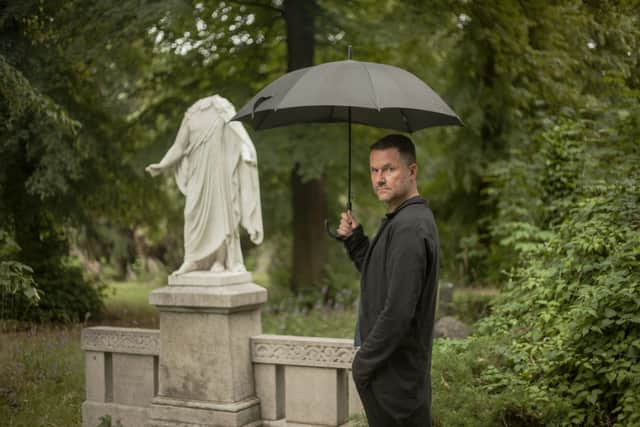

Q. The Gwenna Luna series of books are very moody. Why do you think it important to emphasise the atmosphere?
A. Because the type of scares I like, the types of scares I enjoy as a reader, are emotional rather than visceral. I was always more of a tale-around-the-fireside guy than a slasher guy. And those scares are impossible to do if you don't create a believable space you can feel. It doesn't have to be a cemetery—though those are great, of course. It can be a neon-lit subway car, it can be a science lab. But you have to feel it, entirely, before a shift in the reality of that place will frighten you. I think we can learn all we need to know about ghost stories from Robert Frost's poem ‘Stopping by Woods on a Snowy Evening’, and it doesn't have a single ghost in it.
Q. The Gwenna Luna books hark back to classic ghost stories and stand apart from the work of your contemporaries. What do you think is wrong with modern horror fiction?
A. Nothing at all. It's thriving, as far as I can tell. A lot of wonderful writers are working in modern horror, and a lot of people are enjoying what they do. The modern horror I don't like—again, speaking as a reader—is too pre-occupied with mechanics: which evil book provides the villain with what powers, who walked across which street and that they had a breakfast of eggs and bacon and a glass of juice (orange.) Too much description of the wrong things. There sometimes is little mystery about the supernatural, it's treated as just another skill, like jiu-jitsu or a foreign language. I'm not interested in how anything works. I don't want to know why a ghost appears and what ritual raised it. I only want to know what it feels like to see one.
Q. Where did your love of the horror genre first come from?
A. Two books I came across when I was probably nine or ten. Both were collections of classic supernatural stories, abbreviated and adapted for children. Lucky, really, my first stories of the genre were by Wilde, F. Marion Crawford, Poe, and Dickens. There was also a version of Nicolai Gogol's The Wij (also known as The Viy) that scared the daylights out of me. That witch! In that church! Sitting up in her coffin! Later, when I came across less venerable books—Ghost Hunter such and such, Goosebumpy stuff—I was appalled. What is this thin stuff? I was a little snob. Kids are merciless.
Q. How do you get your inspiration for your horror stories?
A. I think what I do is very much inspired by folk legends and fairy tales. I certainly read a lot more of those than I do horror. There is the authority of time about them—like, somewhere, far enough back, is a reality that led to that particular tale, and it would make your hair stand on end. I think my stories read a little bit like that—modern people entering spaces that are very old and encountering entities that have had stories told about them for a very long time. I was born in a city named after the wailing women that haunted the river crossings, and the founding story begins with a murderous dragon in the moor. And they'd show you the dragon's skull in the museum. There's inspiration for you.
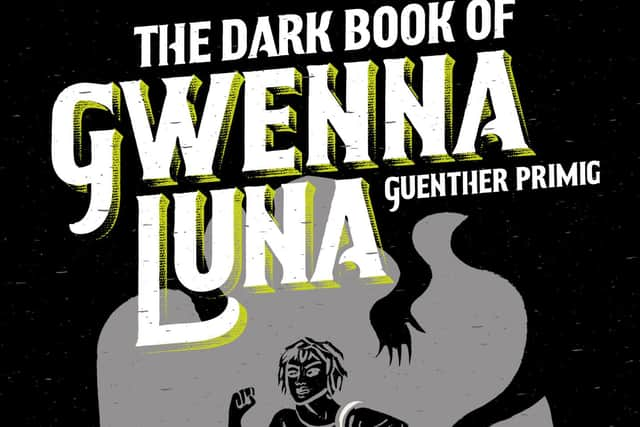

Q. Do you personally believe in the supernatural?
A. I've never seen a ghost, to my knowledge. Even though, how do I know about the hundreds of people I see in the street every day? Any one of them might have been. I've had some predictive dreams that were rather startling. But that's empirical evidence, isn't it, and the question is about belief. I suppose I believe in a spiritual world and a spiritual responsibility, and a great mystery at the heart of things. So, if I did see a ghost at some point, it wouldn't exactly shatter my world view.
Q. The books' protagonist, Gwenna Luna, is very much an outsider and anti-hero. Why did you want to take the character in that direction?
A. I suppose it's because those are the people I like and identify with. We've had enough secretly chosen ones. Gwenna is a mess of half-pieced together knowledge, a very good heart and a great loneliness. She has to keep moving or a murderous shadow will catch up to her. So, every encounter she has with people is intense and temporary. The most intense dream I had as a child was one where I was running through the world very much like that. I never forgot it – the sadness of it, but also the freedom and the intensity of encounters. I had finished the first Gwenna book when I realized that's where she'd come from.
Q. You also write horror screenplays. What's the difference in approach to writing these, as opposed to books?
A. Much more collaborative. In film, as a writer, you will not be making any decisions. You listen to what's needed or wanted and then you try to hit that. And if you respect the people you work for, it feels very good if you manage to do that. Also, working with other people can push you in new directions you wouldn't find on your own, and that can be great fun. Unless it's horrible, of course. But more generally, I think with movies you work much more from the rational brain and with books you work much more from a vague, subconscious, toad-infested pond, and I think I have more of a vague, subconscious, toad-infested pond personality!
Q. If you should recommend one classic horror author and story to readers to get them in the mood for Halloween, what would it be, and why?
A. M.R. James. I know it's not an original, unexpected choice. But the man was just so good. Ghost stories of such believability, grounded in a sober, scholarly world. Apparitions of such malevolence. And, always, that one detail, that one observation that heightens the horror by making it almost physically present.
I just re-read ‘Wailing Well’, somehow one of his less famous stories. Start there. Even if it's not Halloween, it will be when “a man and three women” appear in that horrible field...
Q. The Gwenna Luna series is very much a team effort. Can you explain the benefit of this approach in realising your vision?
A. The benefit lies in the professional skills everybody brings to the table. The editor, the designers, Rory Midhani with his wonderful illustrations and, of course, my partner in this venture, Nadir Catalano, who is basically the overall producer of the books as a brand and physical object—these are all professional people working on a very high level. For me, it's like having a sympathetic architect design your house. It'll look exactly how you want it to look, only you had no idea you wanted it to look that way.
Q. What can readers expect next from the Gwenna Luna series?
A. Gwenna's journey has now, after the second book, started in earnest. The next two books will be two novellas that follow her through her confrontation with the terrible Red Woman, the witch they call the “Child Stealer”, and, ultimately, take her to Berlin, which turns out to be a very dark and haunted place, and the scene of her great love. And just because her dark dreams are buried now—in her world, graves are for crawling out of, so sometimes, they do come back...